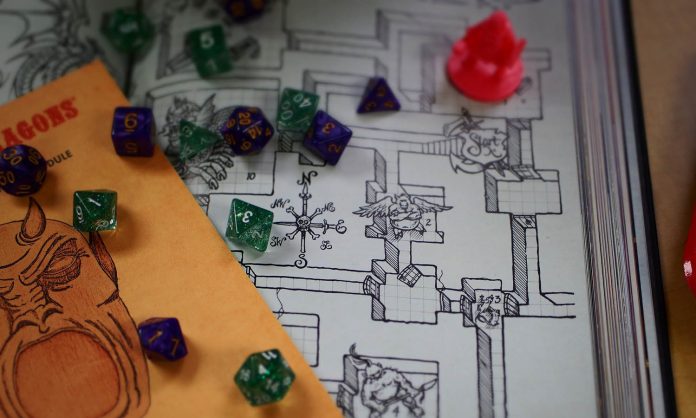In a post on DIY MFA, Kris Hill says a round of Dungeons and Dragons can help you create exciting combat scenes. “What makes Dungeons & Dragons one of the best tools for writing dynamic combat scenes is the way it grounds the action in the physical space it occupies,” Hill says.
For the uninitiated, D&D combat takes place on a tabletop grid, in which each space represents five square feet. The position of each combatant is represented by a marker and the terrain – rocks, forest, shrubbery, etc. – is indicated on the map. The rules specify the combatants abilities, speeds, and the kinds of actions they can take on each turn.
“This ability to use and move on the grid will allow you to see the possibilities for how your characters can take action and use the terrain of your setting,” Hill writes. “It inspires interesting use of the environment, and cooperation between characters in the moment. It will give you an idea of how much can happen in a very short amount of time and allows you to plan what action is happening that your main characters aren’t directly experiencing.”
That kind of planning can help you choreograph your fights, brainstorm unintended actions or mistakes, and forecast the consequences. Hill suggests inviting other players to act out a scenario from your writing, using your characters. “How they react to the terrain and make use of the space will surprise you and you’ll get some great ideas for your writing,” she suggests.












